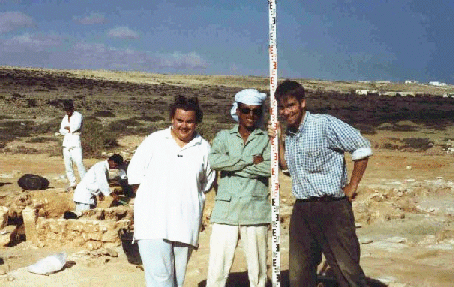
The Liverpool University excavations at Zawiyet Umm el-Rakham began in 1994 and had the aim of further investigating Late Bronze Age activity at the site and in the region as a whole, which it has succeeded in doing, far surpassing expectations. The site has produced a great deal of exciting new evidence and a range of outstanding finds, greatly adding to our understanding of ancient activity along Egypt's Mediterranean coast

Dr Steven Snape, a lecturer in Egyptian Archaeology at the School of Archaeology, Classics and Oriental Studies at Liverpool University, heads the team currently investigating the fortress at Zawiyet Umm el-Rakham.
Excavation usually takes place over a period of about 6 weeks in August/September each year. This team is primarily composed of undergraduate and postgraduate students from Liverpool University specialising in the field of Egyptology. The project has also benefited from the contribution made by other experts in Egyptian and Mediterranean archaeology, including Dr Penny Wilson and Nicole Hirschfeld.
 |
 |
 |
Another significant component of the team are the local workmen, annually engaged to assist at the site. The wage is a significant contribution to their annual income and the dig is a welcome boost to the local economy.
All the finds made at Zawiyet Umm el-Rakham remain in Egypt, one day to be displayed either in Cairo or Alexandria, or perhaps in a new museum planned for Marsa Matruh, whilst many of the site's structure have been reburied to protect them from the elements. However, on this website, the finds and buildings of the 3,500 year old fortress are available to explore at your leisure.